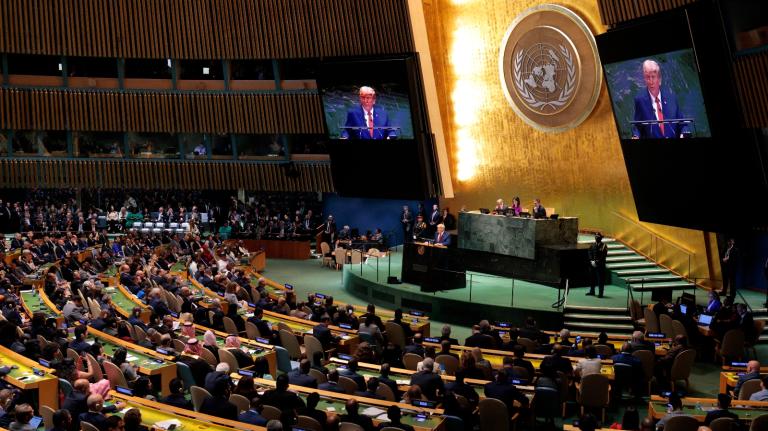Climate change is regressive. Its effects punish the least fortunate the most — those who’ve contributed little to and gained little from polluting economies. But the solutions to climate change can be progressive. Done right, they can share fairly the burdens and opportunities of preventing climate disruption.
I said “can.”
If poorly designed, climate policy can also be viciously regressive — a vacuum cleaner sucking up working families’ earning. That’s why it’s so important to get climate policy right. It’s the single most important economic fairness issue facing us right now: more important than reforming payday lending, more important even than reforming health insurance. It’s what every advocate for economic opportunity should be losing sleep over — and jumping to action to help shape the solution.
The most needed measure for minimizing climate disruption is a firm cap on emissions of greenhouse gases and a mechanism for putting a price on those emissions. In short, climate pricing. We need to make prices tell the truth about the climate.
Truthful pricing of carbon emissions, of course, means higher prices for fossil fuels. Higher fuel prices are regressive. They hit working families the hardest. By a lot.
The U.S. Congressional Budget Office’s rigorous analysis of the different approaches to climate pricing estimates that a carbon charge steep enough to reduce greenhouse-gas emissions by 15 percent would take about 3.3 percent of low-income families’ after-tax money. James Boyce and Matthew Riddle of the University of Massachusetts peg the cost to working families (PDF) even higher.
“Grandfathering” carbon-emissions permits — giving them away to historic polluters, as many energy interests propose to do — would write this redistribution of wealth into law. Under this version of cap-and-trade (Boyce and Riddle call it “cap-and-giveaway”), fossil fuel prices would rise. (They will rise under any firm cap; in fact, they’re likely to rise even without a cap, as they have done in recent years.) Families would pay more for their energy — and their food and other energy-intensive consumer goods. Energy companies, flush from high prices, would reap huge windfall profits. These windfalls would ultimately accrue to the shareholders of energy companies, who are mostly rich families. (This scenario already played out in Europe.)
Under cap-and-giveaway, the richest fifth of families would pay more for their energy, just like everyone else. But their stock portfolios would get so much fatter that the net effect would be an additional $1,200 a year per person, according to Boyce and Riddle.
Yep, under cap-and-giveaway, the rich get richer, and the poor get poorer. This chart from Boyce and Riddle shows roughly how much. (Unlike the previous chart, this one reflects the impacts of massive windfalls for energy company stockholders and various other side effects of cap-and-giveaway, and expresses losses and gains as shares of total household expenditures rather than income.)
I don’t know about you, but I can’t abide a future like that, where the rank injustice of climate change itself is compounded by a system that takes money from working families and gives it to rich ones. It’s Robin Hood in reverse. It’s the New Deal’s evil twin.
Think about it: cap-and-giveaway means that the orderlies in our hospitals will hand hundreds of dollars a year to the surgeons they clean up after; that farmworkers in our vineyards will hand piles of cash to the people who drink their most-expensive vintages; that the janitors in our airports will deliver annual checks to airplane owners; that retired grocery store clerks will pay the moorage fees for yacht owners.
It doesn’t have to be this way, as Boyce and Riddle demonstrate. If we auction rather than give away permits to emit greenhouse gases, the public will claim for the common good the proceeds of higher energy prices. And the public can then return much of the resulting revenue to families, on an equal per person basis. Boyce and Riddle call this “cap-and-dividend”; others call it the Sky Trust. Everyone pays more for their energy; everyone gets a dividend check from the new Climate Trust Fund. A $55/ton carbon dioxide charge would yield almost $700 a year per person. It’d be like the Alaska Permanent Fund, which pays out an annual share of oil earnings to each resident of the state.
The net effect of cap-and-dividend, shown in this chart, is to take the sting out of climate pricing for low- and middle-income families. They pay more for energy, but their climate dividend covers the expense.
That’s not going to end poverty or reverse the widening income gaps that plague our continent. But it’s a step toward climate fairness; it’s enough to offset some of the unfairness of climate change itself. And it’s proof that how we set climate policy matters as much as that we set climate policy.
Cap-and-dividend isn’t the only way to make climate pricing fair. I’ll describe another workable approach next time.
Thanks to Clark Williams-Derry, Sightline’s research director, who did some of the legwork and thinking for this post.
See also: Alan’s first post on climate fairness.


